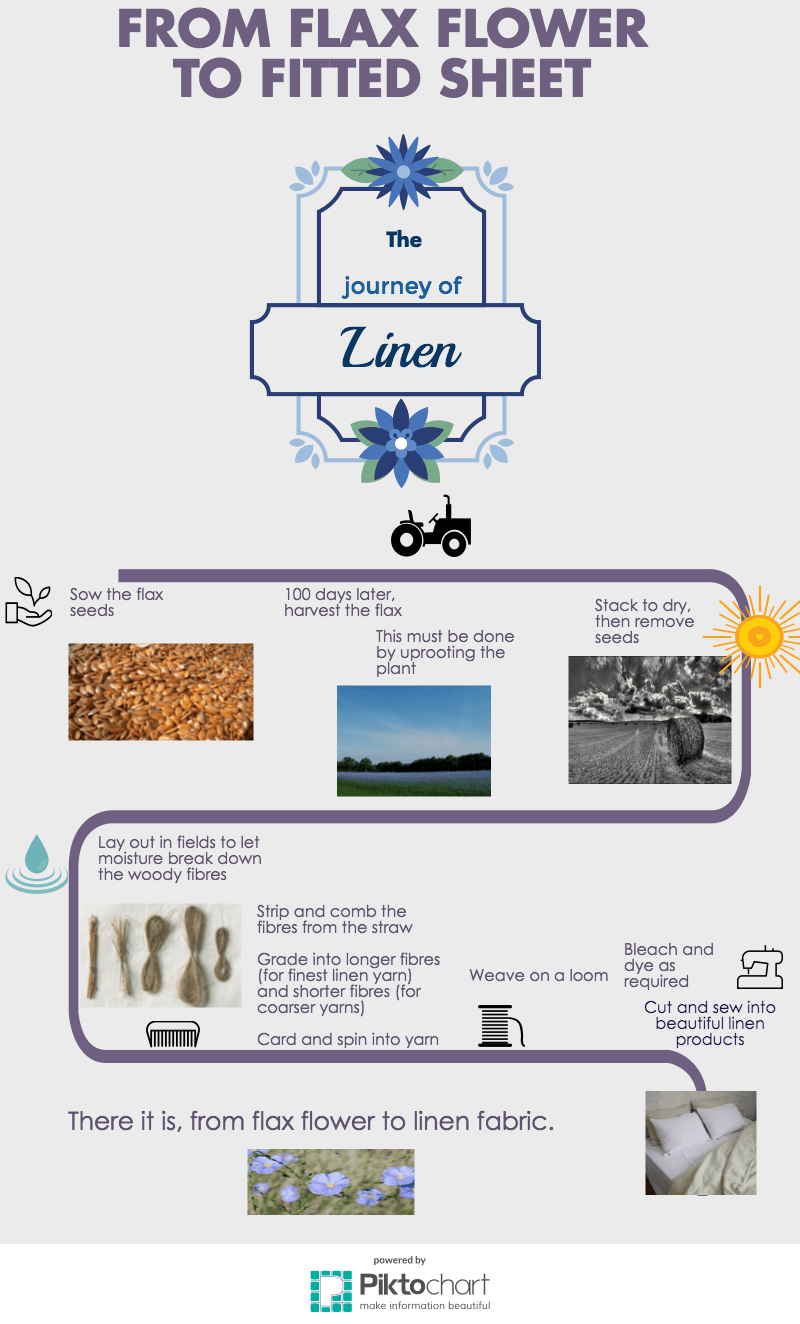We know you love the look and feel of linen, whether in your home or in the clothes you wear. But have you ever wanted to know what linen is made of? If you've wondered how a simple flax flower turns into beautiful linen fabric, we've got everything you need to know about the growing and production process.
As consumers become more aware of where our purchases come from, and with many of us looking for ways to reduce our carbon footprint, it's important to understand how the things in our home are produced. That way we can make informed choices about what we buy, and hopefully use our spending power to support sustainable processes. Typically, items that have been used for centuries are long-standing staples for a reason: they last, they can be produced on a relatively small scale, and the production process to turn them into useful objects doesn't require extensive technology. Linen ticks all these boxes. For over 10,000 years mankind has grown, harvested and used flax for a huge number of things – not only bedlinen and clothing but a surprising range of products from paints and cosmetics to food packaging and wound care. And, of course sumptuous bedsheets, table linen and cloth.
This magical plant is a major staple of Western European agricultural production, where the cool climate and moist soil offer perfect growing conditions. So how does it go from a delicate pink, blue or white flower to the fitted sheets on your bed? We'll show you!
How is linen made?
What is linen used for?
As we mentioned earlier, the uses of flax are incredibly wide: from flax seeds for food to scarves to keep us cosy on summer evenings. With so many applications it's no wonder that we've been cultivating and processing flax for centuries. Despite requiring plenty of knowledge and expertise, the process of growing and turning flax into linen doesn't require large-scale automatisation – much of the work is done by hand, from scutching (separating) the flax to weaving linen fabric. At LinenMe we harness three generations' experience working with linen. We understand how to get the best from this amazing material, and select the finest flax from fertile, well irrigated European land in order to produce durable, top quality finished products.
Why is linen sustainable?
Because the flax plant really only needs the right climate and rainfall to grow, it's also a very environmentally-friendly plant to produce. Farmers use less pesticides, less water and fewer chemicals to grow flax crops, meaning less soil pollution and damage to insect life and wider ecosystems. Once the linen fabric has finished its life as a curtain or tablecloth (or whatever it has become) it biodegrades, meaning there's less waste too. We make sure we use all the offcuts from larger pieces to make napkins and smaller items, again reducing waste. Thanks to their longevity linen products are highly durable and make a great antidote to the fast-fashion, high-turnover consumerism that we now can see has been so harmful to the planet.
Where can you see flax growing?
If you want to lay eyes on stunning fields of purple flax flowers head to Western Europe. Around 80% of linen is grown in flax fields here, in a swathe of about 120 000 hectares of rich, damp land from Northern France through Belgium and up into the Netherlands. These regions have grown flax successfully for generations. But whilst this is a key industry in Europe, worldwide linen makes up just 1% of fibres produced, with cotton being the largest. Given the need for sustainable fabrics, it's time we redressed this imbalance and encourage more places to grow and process flax for linen production. China is a major importer of flax, and the majority of linen produced internationally is used in clothing production.
By purchasing your linen homewares and clothes from brands like us you help support our local growers and producers, and enable traditional artisanal skills to continue and develop alongside newer technologies. Linen is a wondrous fabric and is the perfect choice if you are environmentally-aware and trying to make sustainable choices about your lifestyle.
Read more about the history of linen here.
(Images via Tristan Howard, Skoch3, arts-brighton.ac.uk, irishgenealogy.com)
